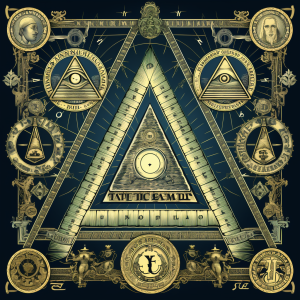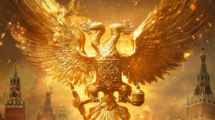Secret societies have long captivated the imagination of those seeking a glimpse into hidden worlds and clandestine operations. From ancient cults to modern-day organizations, these enigmatic groups have wielded significant influence in politics, religion, and cultural movements. In this article, we will delve into the intriguing realm of secret societies, unlocking their secrets and uncovering their impact on society.
What exactly are secret societies? They are exclusive organizations that operate behind closed doors, shrouded in mystery and secrecy. These groups often possess specific rituals, symbols, and codes that bind their members together. Throughout history, they have played crucial roles in shaping events and shaping the course of human civilization.
The significance of secret societies cannot be overstated. Ancient secret societies existed as far back as Egypt and Greece, with influence expanding to Roman emperors and medieval knights. These secretive groups have influenced societal structures and power dynamics – from infiltrating governments to realigning religious beliefs. They act as conduits for hidden knowledge, harboring mysteries that continue to fascinate us today.
Join us as we navigate the historical origins of these elusive factions in our next section. Step inside a world that has shaped nations and powerful individuals alike. Brace yourself for an exploration into the depths of secrecy as we unlock the power of secret societies.

Historical Origins
Secret societies have a rich and intriguing history that stretches back centuries, making them a fascinating subject of study. In this section, we will delve into the ancient roots of secret societies, exploring their origins and the significant role they have played in shaping politics, religion, and cultural movements.
Throughout history, various ancient civilizations had their own secret societies with different purposes and rituals. One notable example is the Eleusinian Mysteries, an ancient Greek secret religious cult that celebrated the myth of Demeter and Persephone. The initiation rituals took place in the city of Eleusis and were considered one of Greece’s most important religious establishments. The secrets revealed during these ceremonies were said to guarantee the initiates a blissful afterlife.
Another influential secret society from antiquity was the Cult of Mithras, which originated in Persia but gained popularity within the Roman Empire. It was a male-only cult centered around the god Mithras and focused on concepts such as loyalty, morality, and bravery. Initiates underwent several stages of initiation rites that included symbolic rituals representing rebirth and salvation.
The influence of secret societies extends beyond religion into politics as well. For instance, China has a long history of secret political organizations dating back to ancient times. The White Lotus Society, founded during the Yuan Dynasty in the 14th century, aimed to overthrow foreign rulers through rebellion and revolution. This society played a crucial role in fostering resistance against oppressive governments throughout Chinese history.
From ancient Greece to Imperial China, secret societies have left an indelible mark on human civilization. Their influence can be seen not only in religion but also in politics and cultural movements. By delving into their historical origins, we gain valuable insights into how these secretive groups have shaped our world over millennia.
Key Points
- Ancient civilizations had their own secret societies with distinct purposes and rituals.
- Examples include the Eleusinian Mysteries in ancient Greece and the Cult of Mithras in the Roman Empire.
- Secret societies have influenced religion, politics, and cultural movements throughout history.
Famous Examples
Illuminati: Myths and Realities
One of the most well-known secret societies is the Illuminati, often surrounded by myths and conspiracy theories. The origins of the Illuminati can be traced back to the 18th century in Bavaria, Germany. Founded by Adam Weishaupt, a professor of law, the society aimed to promote Enlightenment ideals such as rational thinking, freedom of thought, and equality. However, due to its secrecy and influence over important figures at the time, it quickly became a target for speculation.
Many conspiracy theories surround the Illuminati, with some claiming that they manipulate world events and control governments from behind the scenes. Such theories often portray them as a group working towards establishing a New World Order or even as members with supernatural powers. While these claims are intriguing and captivating for many people, it is essential to differentiate between fact and fiction when it comes to secret societies.
Freemasons: Secrets behind the Secret Handshake
Another famous secret society that has captured public imagination is Freemasonry. With its origins dating back centuries, Freemasonry has been associated with influential individuals such as George Washington and Benjamin Franklin. Contrary to popular belief, Freemasonry is not inherently secretive but rather private in nature. Its rituals are deeply rooted in tradition and symbolism.
One of the most well-known aspects of Freemasonry is its use of secret handshakes or “grips” as a means of recognition among members. These unique gestures demonstrate both fraternity and trust among Freemasons. However, it is important to note that this particular aspect does not define their entire organization but merely one facet of their traditions.
Skull and Bones: The Secretive Group Shaping Influential American Leaders
Skull and Bones is an exclusive secret society at Yale University that has gained widespread attention for its influence on American politics and leadership positions. Founded in 1832, the society has boasted members including Presidents William Howard Taft and George H.W. Bush. Skull and Bones is known for its secretive nature, with its inner workings and rituals remaining hidden from the public eye.
While much of what occurs within the society remains a mystery to outsiders, it is believed that Skull and Bones fosters connections and networks that can greatly impact careers in politics, business, and other influential fields. This has led to both intrigue and speculation about the extent of its influence on American society as a whole. However, due to its secretive nature, accurate information about the organization is limited, fueling theories that may or may not be grounded in truth.
The exposure of these famous secret societies raises questions about their true nature, purpose, and influence on various aspects of society. It captures our curiosity as we delve into their origins, myths, practices, and impact on political power structures. As we further explore secret societies throughout history and their modern-day counterparts, it becomes clear that they continue to captivate our collective imagination while simultaneously reminding us of the thin line between reality and conspiracy theories.

Symbols and Codes
Secret societies have long been known for their use of symbols and codes, which add an air of mystery and exclusivity to their activities. These hidden languages not only serve as tools for communication and identification within the society but also carry deeper meanings that reflect the values, beliefs, and aspirations of the members.
In this section, we will delve into the power of symbols in secret societies, explore some common symbols and their meanings, as well as uncover the intricate codes used by these organizations.
Symbols have a unique ability to convey complex ideas and concepts without using words. They can be simple or elaborate, static or dynamic-each with its own hidden significance. For secret societies, symbols play a crucial role in identifying members to one another while remaining concealed from outsiders.
One widely recognized symbol is the Eye of Providence, commonly associated with the Illuminati. This symbol represents divine providence or watching over humanity. Another example is the square and compass emblem used by Freemasons, symbolizing morality and self-growth.
In addition to conveying meaning through symbols, secret societies have developed sophisticated codes to further maintain secrecy within their ranks. These codes range from simple letter substitutions to more complex encryption methods. The language of code allows society members to communicate securely without revealing sensitive information to unintended recipients. A notable example is the Pigpen cipher used by groups like Skull and Bones, where letters are replaced with geometric shapes for encryption purposes.
By understanding these symbols and codes, we gain insight into the inner workings of secret societies. Analyzing their usage not only sheds light on their clandestine activities but also highlights a fascinating aspect of human culture-the creation of shared meanings through visual representation and encrypted messages that go beyond words alone.
| Symbol | Meaning |
|---|---|
| Eye of Providence | Divine providence, watching over humanity |
| Square and Compass | Morality, self-growth |
| All-Seeing Eye | Omniscience, enlightenment |
Rituals and Initiation
Insight into the initiation process of secret societies
One of the most intriguing aspects of secret societies lies in their initiation process. These exclusive organizations have a long-standing tradition of requiring rituals and ceremonies to welcome new members into their ranks. The initiation process serves as a way to establish bonds, test dedication, and maintain the secrecy and loyalty that is paramount to these societies.
The exact details of initiation ceremonies vary from one secret society to another, with each having its own unique traditions, symbols, and rites. However, there are some common elements that can be found across different secret societies. Initiation often involves a series of tests or challenges that candidates must undergo to demonstrate their commitment and suitability for membership. These tests can be physical, mental, or even spiritual in nature.
Elaborate rituals and ceremonies
Rituals and ceremonies play a central role in the initiation process of secret societies. These events are often highly symbolic and elaborate, designed to create a sense of mystery and exclusivity. From ancient chants to symbolic gestures, these rituals aim to create a profound experience for both initiates and existing members.
In some cases, initiation rituals may involve reenacting historical or mythical events that hold significance within the society. This not only serves as a way to transmit knowledge and traditions but also fosters a deep connection between members who have partaken in the same ceremonial acts throughout generations.
The significance of secrecy and loyalty in initiation rites
Secrecy and loyalty are fundamental values upheld by secret societies, which are strongly emphasized during the initiation process. Initiates are required to take oaths or vows pledging their allegiance to the society’s goals and ideals while promising to keep its secrets protected. The emphasis on secrecy aims.
to ensure discretion among members, creating an environment of trust within the society.
Loyalty is seen as essential not only for the continuation of the society but also for maintaining its influence and power. Through rigorous initiation rites that test an individual’s commitment, secret societies strive to create a sense of unity and unwavering dedication among their members.
The rituals and initiation process serve as a pivotal point in the journey of becoming part of a secret society. They not only reinforce the symbolism, tradition, and values of these organizations but also foster a deep sense of camaraderie and belonging among its members.

Conspiracy Theories
Conspiracy theories have always surrounded secret societies, adding an air of mystery and intrigue to their existence. In this section, we will delve into the most popular conspiracy theories surrounding secret societies, separating fact from fiction and examining their impact on society.
One of the most well-known conspiracy theories is the belief that the Illuminati secretly controls world events and governments. This theory alleges that this clandestine group is manipulating global affairs to establish a New World Order. While these claims have captivated many minds over the years, there is little credible evidence supporting them. The Illuminati was actually a historical secret society founded in Bavaria in 1776 with goals centered around enlightenment ideals, but it was disbanded just years later.
Another conspiracy theory centers around the Freemasons, with speculation ranging from controlling governments to having sinister rituals and influences in major historical events. While it is true that Freemasonry has had influential members throughout history, such as several U.S presidents, attributing such sweeping power and hidden agendas to the entire organization seems unfounded. The complex rituals and symbols used in Freemasonry are not nefarious in nature but rather hold deep symbolic significance within their teachings.
The influence of conspiracy theories on society cannot be underestimated. While some may dismiss them as mere fiction or entertainment, these theories can shape public opinion, especially when they gain traction through various platforms such as social media. It is essential to critically evaluate information and consider reliable sources before accepting or propagating these theories.
| Conspiracy Theory | Description |
|---|---|
| Illuminati Controls World Events | The belief that the Illuminati secretly manipulates global affairs and governments to establish a New World Order. |
| Freemasons’ Hidden Agendas | The claim that the Freemasons have hidden agendas and control governments or have influenced major historical events. |
| Election Manipulation by Secret Societies | Suspicions that secret societies are covertly manipulating elections to achieve specific outcomes. |
| Secret Society Influence in Hollywood | The notion that secret societies exert influence over the entertainment industry, dictating narratives and controlling celebrities. |
It is worth noting that while conspiracy theories may contribute to a wider discourse on secret societies, it is essential to approach them critically and discern fact from fiction. Exploring these theories can provide insight into the societal impact of secret societies and how they shape public perception.
Influence on Pop Culture
Secret societies have long captured the imagination of people around the world, and their influence can be seen in various forms of media. From films to books and TV shows, secret societies have become a popular theme that shapes our entertainment industry. This section delves into the intriguing way in which secret societies shape our pop culture.
One common way secret societies are portrayed in popular media is through the use of symbols and codes. Filmmakers, authors, and television producers incorporate these mysterious elements into their narratives to add an air of intrigue and suspense.
For example, the Illuminati, with its supposed control over world affairs, has become a staple in conspiracy-themed entertainment. The symbol of the all-seeing eye is often depicted as a sign of their omnipotence, creating an aura of mystery around secret societies.
In addition to symbols, secret society rituals and ceremonies also make for compelling storytelling. These rituals are often depicted as elaborate and enigmatic events that heighten intrigue and captivate audiences. Films like “Eyes Wide Shut” explore initiation rituals that involve secrecy and voyeurism, while TV shows like “The X-Files” delve into mysterious cults with complex initiation processes. By incorporating these rituals into their narratives, creators tap into audiences’ fascination with secret societies.
The allure of secret societies extends beyond just capturing attention; it also shapes societal perspectives. Fictional depictions of secret societies in media can influence how society perceives these organizations in reality.
Some viewers may develop a skeptical view towards any secretive group based on what they see or read, while others may be inspired by themes such as loyalty or the pursuit of knowledge embodied by certain fictional secret societies like Hogwarts School of Witchcraft and Wizardry from J.K. Rowling’s Harry Potter series.
Modern-Day Secret Societies
As society continues to evolve, many wonder if secret societies still exist in the modern-day. While there is no concrete proof of their existence, speculation and rumors persist regarding alleged secret organizations operating in the shadows. These supposed groups are believed to have unique agendas and significant influence, fueling both fascination and skepticism among the public.
One commonly mentioned modern-day secret society is the Bilderberg Group. Founded in 1954, this annual conference brings together influential figures from politics, finance, academia, and media to discuss global issues behind closed doors. Critics argue that the secrecy surrounding these meetings raises suspicions about their true intentions and influence over world events. However, supporters claim that the group simply provides a private space for high-level discussions without public scrutiny.
Another alleged modern-day secret society is the Order of Skull and Bones at Yale University. This exclusive fraternity has been rumored to mold its members into future leaders by granting them access to a network of influential connections. While some believe this secretive organization wields immense power over politics and business, others dismiss it as nothing more than an elite social club with limited impact on society.
Additionally, there are conspiracy theories suggesting that certain technology companies or financial institutions secretly control world events for their own gain. These theories often revolve around claims of hidden alliances manipulating economic markets or political decisions. Despite lacking substantial evidence, they continue to captivate popular imagination and fuel speculation about potential secretive forces at play in our everyday lives.
While concrete information about contemporary secret societies remains elusive, the allure persists for those intrigued by hidden networks operating under a veil of secrecy. The blurred line between reality and conspiracy theory only adds fuel to the fire, leaving room for speculation and curiosity about what truly happens behind closed doors.
As technology advances and information becomes more accessible, uncovering any existing modern-day secret societies may become increasingly difficult. Yet, as long as rumors persist and human curiosity thrives, the fascination with secret societies will continue to capture the public’s imagination. Whether fact or fiction, the allure of these enigmatic organizations remains a testament to their enduring presence in society.

Conclusion
In conclusion, the phenomenon of secret societies continues to captivate and intrigue individuals around the world. Throughout history, these enigmatic organizations have played significant roles in shaping politics, religion, culture, and even the development of influential leaders. The ancient origins of secret societies date back centuries, leaving a trail of mystery and fascination in their wake.
From the infamous Illuminati to the secretive Freemasons and Skull and Bones society, famous examples of secret societies have been revealed to the public over time. However, the true extent of their power and influence still remains shrouded in secrecy. These organizations utilize symbols and codes as a means of communication and concealment, creating an air of mystique that further adds to their allure.
The rituals and initiation processes associated with secret societies are elaborate and unique. They serve as a test of loyalty and dedication among members, reinforcing the importance of secrecy within these exclusive groups. While conspiracy theories often emerge surrounding these societies, it is important to separate fact from fiction in order to fully understand their impact on society.
Secret societies have not only left an indelible mark on history but continue to shape our modern world as well. References to these groups can be seen throughout popular culture in various forms such as books, films, and TV shows. The enduring fascination with secret societies underscores their enduring appeal.
As we reflect on the influence of secret societies today, it is clear that despite technological advancements and increased access to information, there is still much uncertainty surrounding their existence in modern times. Speculation about alleged secret organizations persists, blurring the line between conspiracy theories and truth.





